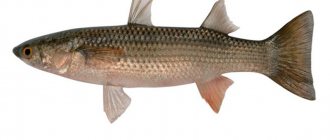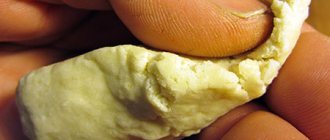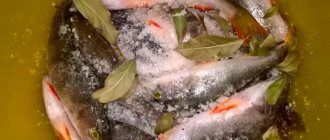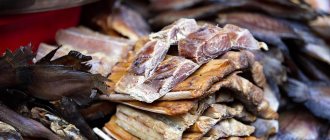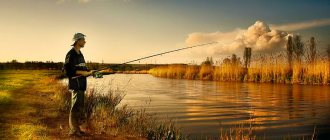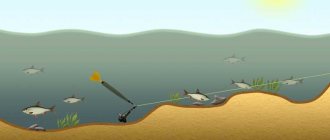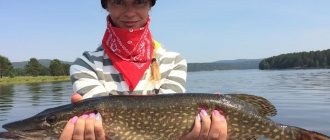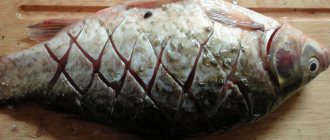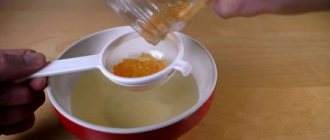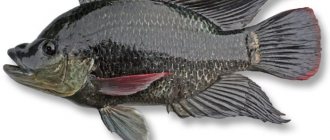Pelengas, as a representative of the mullet family, is better known to residents of the European part of Russia. Even the ancient Greeks caught its ancestors in the Mediterranean, Aegean, Black and Marmara seas.
Since the 90s of the twentieth century, pelengas has been an object of industrial fishing, loved and revered by amateur fishermen and aesthetes of fish cuisine. Surprisingly, this fish has several names: pelengas, pilengas, pelingas, etc. Let’s take a closer look at what this fish is.
Pelengas: what kind of fish, where it is found, description
The Sea of Japan is considered the birthplace of the pelengas. But as a scientific experiment, replenishing fish stocks and improving the health of the southern seas, it was released into the Azov and Black Seas. The acclimatization of the sawfish was very successful, it took root and multiplied so much that it is now considered a commercial fish.
Pilengas are actively caught in the Aegean and Marmara Seas, and have recently been spotted in the Mediterranean Sea. This fish is capable of living in both sea and river water; it goes to the Dnieper, Don, Danube, and Kuban for the winter.
Belingas is considered the orderly of reservoirs; this fish's diet includes invertebrates and bottom sediments. This reclamation fish is not just looking for something to profit from, it performs an important function in cleaning water bodies from organic silt.
The body of the pilengs is elongated, similar to a spindle or torpedo, covered with large silvery scales with dark spots along the very edge. Perengas are much larger than mullet; the size of the fish can reach 60-70 cm and weigh up to 3 kg.
Fishing methods
The exterior and habits of the fish are similar to its closest relative, the mullet, the difference being the weight and growth rate.
Angling takes place from the shore using long spinning rods equipped with a powerful multiplier or an inertia-free reel. Local lovers know what pelengas are, because fishing on the coast is an exciting activity, during which you can not only enjoy the seascape, but also catch dinner. Peak fishing activity occurs in autumn. The equipment may look different, but there is a classic installation. It includes the following elements:
- Lead material (line with a diameter of 0.25-0.3 mm).
- Hooks No. 8-10 according to the international classification (5-6 according to the Russian table).
- Polystyrene foam (clings to the hook or in the middle of the leash, this is done to suspend the bait in the water, so the bait is more noticeable).
- A sinker, the weight of which is selected in relation to the test of the rod.
The distance between the leads must be at least 20 cm. The diameter of the main line used is an order of magnitude thicker. Thus, in the event of a break, the leash breaks and a larger amount of monofilament is preserved.

The favorite delicacy of the pelengas, the Nereis worm, is used as a bait. You can get it in the upper layers of silt of estuaries or buy it at a fishing store. In addition to the favorite bait, they use a red earthworm, sandstone, maggot and even canned corn. The fish move in large schools, so when one bite occurs, others immediately follow. The average weight of prey ranges from one to two kilograms; larger specimens are rare.
To learn more:
Haddock: sea fish or river fish?
Daily activity appears at dawn and subsides closer to 10 o'clock. During the day, the fish makes itself known with rare catches, and resumes its interest in the bait after sunset.
In a strong wind that drives the waves, you shouldn’t go fishing: pelengas, both Black Sea and Azov, are excellently caught when there is a calm, but a storm makes them fall into a stupor.
As the weather gets colder, the schools move to deeper places, and the appetite of marine life gradually subsides. Fishing in October and November is carried out mainly from a boat. Pelengas is a strong trophy, and the time of fishing depends on what kind of fish is hooked. When fishing on shore, carp rods are used. You can take an onboard fishing rod with a carp rig with you into the boat. In addition to traditional gear, spearfishing with a gun also takes place. Divers do not use oxygen tanks as this type of activity is prohibited.
What is the difference between pelengas and mullet?
The main distinguishing feature of the sawfish is its larger scales and orange cornea. The mullet has much smaller scales and blue eyes. Both in appearance and taste, mullet is a more delicate fish.
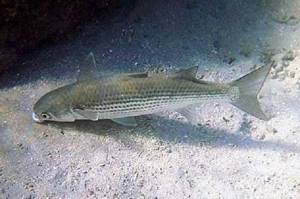
Fish pelengas in natural conditions
I recommend reading:
Mullet - what kind of fish, where is it found, photo, description, how to cook, benefits
Types of mullet
The most diverse representatives of this species are in the Black and Azov Seas. The mullet has become widespread in the Caspian Sea, where it was brought centuries ago.
Black Sea mullet
This species has an elongated body with a flattened back. The color is gray, but the abdomen may have a silver tint. She still has the same two distinctive black stripes, although the sides may be lighter than the back.
The scales of the Black Sea mullet are large. It has a small head that has a pointed nose (which is in the same plane as the dorsal fin). A distinctive feature is large eyes and a small mouth. An adult is considered an individual that has reached a length of at least 40 cm. Its average life expectancy, if it was not caught for industrial purposes earlier, is from 12 to 15 years.
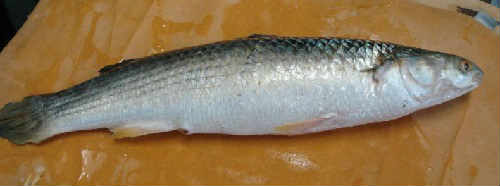
Caspian mullet
It is larger than the Black Sea one. This species appeared in the Caspian Sea only in the thirties of the last century. Then 3,000,000 fry were brought to this sea from the Black Sea. Every year hundreds of thousands of centners of such fish are caught in the Caspian Sea.
The breeding time of the Caspian mullet differs from the Black Sea mullet. Mullet in the Caspian Sea spawns in the open sea, and its eggs are found on the surface of the water along with plankton. This is one of the main differences between the Caspian species and the Black Sea one, because in the Black Sea it goes to estuaries to spawn.

Azov mullet
On the coast of the Azov Sea it is called “crane”. On average, the length of one individual is about 25-30 cm. Despite its small size, the Azov mullet is distinguished by its high fat content. It is sold mainly fresh or frozen.
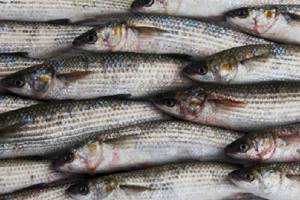
Pelengas: benefits
1. Has a positive effect on human brain activity.
2. Helps in the treatment of hypertension, atherosclerosis, and has a beneficial effect on the entire cardiovascular system.
3. It prevents diseases of the immune system and malignant tumors.
4. It is a natural antioxidant and improves the condition of skin and hair.
5. Helps reduce the level of “bad” cholesterol in the blood.
6. Relieves discomfort and symptoms of PMS in women.
7. Normalizes the functioning of the entire digestive tract, reduces blood sugar levels.
8. Increases the body's resistance to stressful situations, improves mood, and fights depression.
9. Iron is essential for preventing anemia.
10. Iodine normalizes the functioning of the thyroid gland and replenishes the lack of hormones.
11. Potassium will help remove excess fluid from the body, relieve swelling, and saturate cells with oxygen.
12. Phosphorus is necessary to maintain water-alkaline balance, as well as to strengthen bone tissue and tooth enamel.
13. It is recommended for use by pregnant women for the proper formation and development of the fetus, as well as by older people for the prevention of cardiovascular diseases.
Composition and calorie content
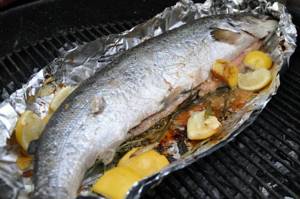
It was previously noted that 1/5 of fish consists of protein. It is completely absorbed by the human body. In summer, fish meat contains a high concentration of fat, its level reaches 8 percent. The fatty acid content is 32 percent in summer and 17 percent in winter.
The meat is famous for the presence of retinol, as well as B vitamins. Magnesium, iron, phosphorus, calcium and potassium can be separated from the minerals of this product.
Due to its chemical composition, pelengas is one of the natural antioxidants. Its meat has a positive effect on the brain. The product also has a beneficial effect on the cardiovascular system. With regular use, people are protected from hypertension, atherosclerosis and cancer.
Speaking about the calorie content of this type of fish, it should be noted that it belongs to dietary products, since 100 g of fish fillet contains only 85 kilocalories.
How to choose, how to store
Stores sell both fresh and frozen fish. When buying a fresh carcass, pay attention to the scales; they should be shiny, without mucus, and have a pleasant smell. The fish's eyes should be transparent.
It is best to buy fresh pilengas before actual preparation. It can be stored for no more than 24 hours in the refrigerator.
For a frozen carcass, check the expiration date or date on the packaging. Frozen fish can be stored for no more than one month. If the packaging is transparent, then choose only the fish where the least amount of ice has formed.
Fried pelengas
Mullet: where it is found and lives
The Black and Azov Seas are considered the birthplace of the mullet. These same seas contain the greatest diversity of species of this fish. However, it also lives in other seas, and not only in the Caspian.
At the end of the 20th century, this species was introduced into the Sea of Japan. Now it is found on the coasts of America, New Zealand and Australia, Southeast Asia, lives in the Pacific and Indian Oceans, and can be found in coastal waters. Found in all warm seas of the tropical zone. Some species of this fish can even live in fresh waters.
How to cook pelengas
Pilengas meat has a very beautiful milky color, a slightly sweet taste, and there are practically no bones in it.
This fish makes a very tasty, rich fish soup; you can make very tender cutlets (meatballs), royal aspic, and amazing pies.
Even if you just fry it in a frying pan or bake it in the oven with mayonnaise, you can add cheese and sour cream, it will also be very tasty. Amazing salads are made from canned belengas.
If possible, the fish turns out very tender and aromatic if grilled with any vegetables.
I recommend trying:
Fish pelengas - 9 most delicious recipes
Mullet: calorie content, nutritional value
The calorie content of an individual is 121 calories per 100 g of product. Mullet does not contain carbohydrates, but has a lot of proteins, they make up 20% of the carcass weight. There is much less fat in fish - about 10 times less than protein.
The vitamin composition of the product is presented in the table below.
| Vitamin Pyridoxine (B6) | Quantity 0,49000 |
| Thiamine (B1) | 0,10000 |
| Ascorbic acid (C) | 1,2000 |
| Cobalamin (B12) | 0,00025 |
| Niacin (RR) | 6,30000 |
| Retinol (A) | 42,00000 |
| Pantothenic acid (B5) | 0,88000 |
| Riboflavin (B2) | 0,10000 |
| Folic acid (B9) | 0,10000 |
Below is a table with the amount of macro- and microelements:
| Name Microelements | Quantity |
| Molybdenum (Mo) | 0,0040 |
| Zinc (Zn) | 0,8800 |
| Fluorine (F) | 0,4300 |
| Iron (Fe) | 1,4100 |
| Nickel (Ni) | 0,0060 |
| Selenium (Se) | 0,0468 |
| Manganese (Mn) | 0,1400 |
| Macronutrients | |
| Phosphorus (P) | 244,0000 |
| Calcium (Ca) | 31,0000 |
| Magnesium (Mg) | 33,0000 |
| Sodium (Na) | 71,0000 |
Water makes up about 70% of the carcass weight.
What does the price depend on?
Pelengas is a valuable commercial fish that can be bought in specialized fish and grocery stores. Due to its large weight, it is sold cut up, so it is rarely possible to see what it looks like whole. Dietary meat with medium fat content contains only 84 kcal/100g. It can be used to prepare various children's dishes, but it is not recommended for use as food for people with individual intolerance.
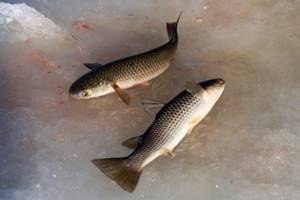
The price of fish is determined taking into account the following factors:
- origin, that is, in what environment it was grown - natural or artificial;
- size;
- presentation – live, frozen, dried, smoked;
- time and weather conditions of the catch.
There are practically no bones in this fish; the meat is rich in nutrients and minerals, such as retinol and B vitamins.
In order not to make a mistake in choosing a carcass, you need to remember its description: a round, wide back, shiny scales that fit tightly to the body, red-violet gills indicate good quality.
Pelengas in the oven on a bed of mushrooms
This dish has a very pleasant taste; to create it, prepare the following ingredients:
- 1 pelengas, gutted, scaled and headless. Average weight – 1.5-2 kg;
- about 700 g of champignons, if you really like mushrooms, you can use 1 kg;
- 400 g hard cheese;
- vegetable oil;
- 100 ml white wine;
- ½ part lemon;
- mayonnaise or sour cream – 100 g;
- herbs, seasonings, salt.
Preparation and marinating
Cut the prepared pelengas carcass into portions, their thickness should be from 5 to 8 cm. Now in a deep container, mix wine, seasonings, salt, as well as lemon juice or citrus, cut into slices. Portioned pieces must be transferred to a bowl, combined with the marinade, and lightly mashed with your hands. That's it, leave the bearing for at least 20 minutes.
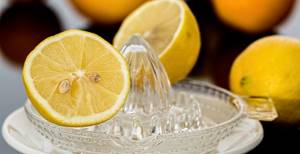
Vegetables and other ingredients
Wash and slice the mushrooms, do not make the pieces too thin, they will shrink significantly during heat treatment. Grate the cheese on a coarse grater, and then cut the foil, forming large rectangles or squares. The shape depends on the size of the fish pieces.
